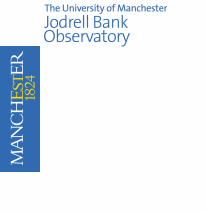PhD Projects 2006/2007
Pulsars provide the nearest thing to a physicist's dream come true. Being the end-point of stellar evolution, they are densest bodies next to black holes and give us an insight into the most extreme physical conditions of matter density, pressure and magnetic field observable by man. They also provide the most precise clocks known to humankind for undertaking unique experiments of gravitation and general relativity. Furthermore, they can be used as probes of the distribution of ionised material and magnetic field in the Galaxy with a precision which nothing else can. We use the telescopes at Jodrell Bank, Parkes (Australia) and Arecibo (Puerto Rico) in this work and frequently travel to the foreign instruments to make observations. The pulsar group at Jodrell Bank are arguably the most productive in the world in this area and have discovered more than three-quarters of the known population of these elusive and fascinating objects.
There are several main active areas of research in the general area of pulsar astronomy which would support projects which would be ideal for students, starting in September 2006. While we outline some of these areas below, we can usually taylor projects to match a student's interest.
Much of what we know about pulsars is derived from analyses of regular timing observations which yield positions, spin-down rates, and dispersion measures to high accuracy. In addition, timing tells us a lot about irregular behaviour such as period glitches, timing noise and, if present, the orbits of any companion stars/planets. Signals from radio pulsars show a frequency dependent propagation effect when they travel to through the ionized interstellar medium. Only a special technique known as coherent de-dispersion is able to restore the original pulse shape and allows the most accurate pulsar timing. At Jodrell Bank we have a unique on-line system named COBRA which comprises a massive 182-processor parallel super-computer which can perform coherent de-dispersion in real-time, providing us with the highest timing accuracy possible.
Pulse shape of the second fastest rotating pulsar (>38,000 RPMs!) observed with in-coherent and coherent de-dispersion.
In this project, the student will be able to take part in the exciting further development of COBRA and (s)he will have the opportunity to employ the new equipment in measurements of millisecond pulsars, i.e. the fastest rotating objects in the universe!
Please contact Michael Kramer (mkramer@jb.man.ac.uk) for further details.
